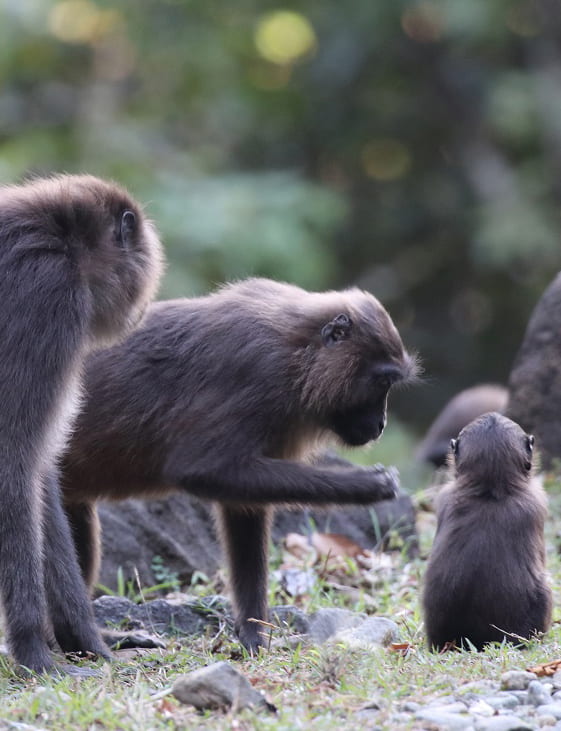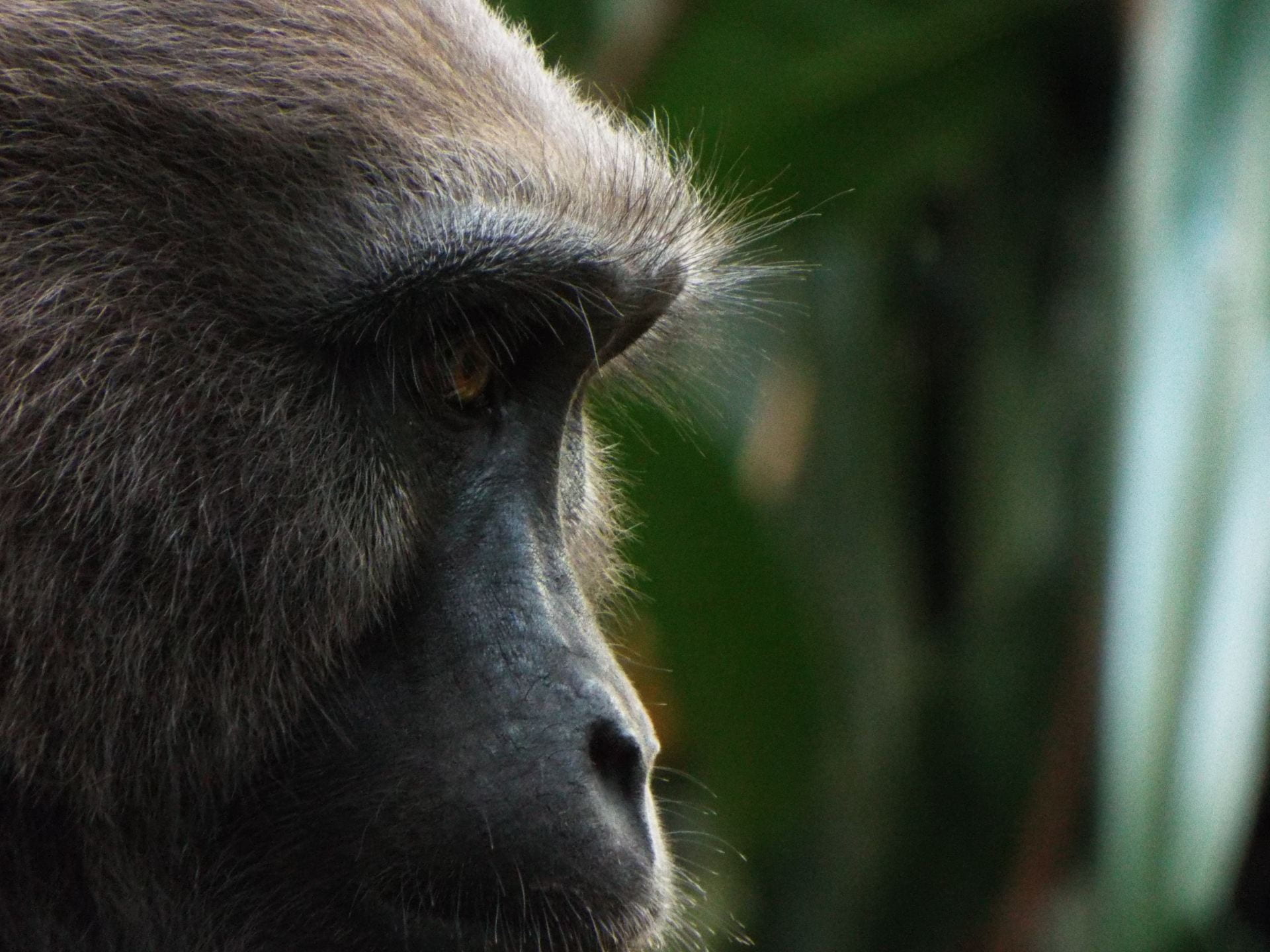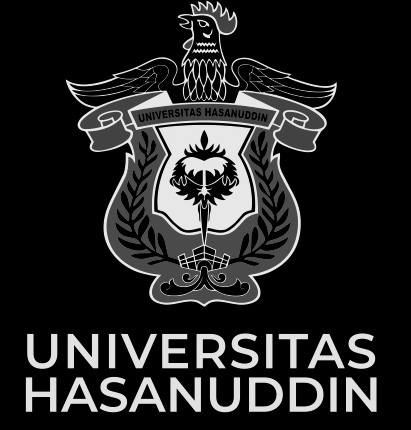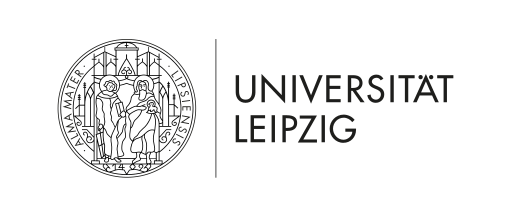MACACA MAURA PROJECT
SCIENTIFIC OBJECTIVES
Conservation
Protecting the moor macaque and its habitat is the top priority of our project. Our aim is to go beyond the academic community in order to controbute to the conservation of the rich biodiversity of Sulawesi Island. Our projects focus on:
a) Geographic distribution and population size
Moor macaques are listed as endangered in the UCN Red List of Threatened Species (Supriatna et al., 2008), and its population is steadily declining. The last review of the conservation status of this species was published more than 10 years ago. Therefore, we are conducting a large scale survey to systematically monitor the distribution of moor macaques, estimate their population size and age/sex composition, and assess the quality of the forest they inhabit (in terms of food abundance and biodiversity). In this way, we aim to help implementing a detailed conservation plan to protect the macaques in the wild, in collaboration with the Indonesian government and the local communities.

b) Conservation and outreach
We collaborate with local teachers and organisations to improve awareness of the importance of protecting the forests of Sulawesi and the species living there. We believe that education is the most important tool for facilitating the coexistence of humans and other species and, ultimately, for protecting the environment. We also report to local authorities any illegal activities involving the macaques or other protected species.
Social Behaviour
Social complexity and flexibility are key features of primates. The way individuals interact with one another and the type of relationships they form with their group mates has profound consequences on individuals’ reproductive success, offspring survival and longevity. We work on the following key topics:

a) Sociality and variation in social behaviour
As individuals become older, they become capable of understanding and assessing social contexts and develop greater set of social behaviours. In addition, the quality and frequency of social interactions can vary dramatically across individuals, groups and seasons. By monitoring social behaviour in different groups of wild moor macaques we aim to understand individual changes in behavioural patterns across developmental stages, as well as the role of ecological (e.g. food abundance and distribution), social (e.g. group composition) and individual factors (e.g. personality) that best predict intra-specific variation in social behaviour in moor macaque.
b) Interactions between groups
We aim to understand the ecological (e.g. degree of home-range overlap), social (e.g. group size) and cognitive (e.g. spatial memory) factors affecting the frequency and quality (peaceful, neutral or aggressive) of interactions between neighbouring groups. When aggressive inter-group interactions do occur, we aim to analyse whether or not individuals decide to take part in the aggressive interaction with consideration of factors such as their dominance rank, the resource(s) at stake and responses of their group mates.
Cognition
Primates live in socio-ecologically complex environments and rely on complex behavioural strategies to navigate through them. Cognitive adaptations are especially useful for this purpose, as they allow animals to organize perceptual and behavioural processes in a more flexible way. We are particularly interested in the following topics:
a) Innovation and social transmission of innovative behaviour
The ability to innovate and the social transmission of innovations have played a central role in human evolution. However, innovation is also crucial for other animals in that it allows them to better cope with novel socio-ecological challenges. Tool use is a special case of innovation that is receiving considerable attention from scientists due to the importance of tool use for human evolution. We aim to understand the factors that explain the emergence of innovation in macaques, and monitor tool use behaviour.

b) Understanding others’ intentions and knowledge
The most challenging problems that primates face are thought to be social in nature, because partners cannot be predicted and manipulated as easily as objects. We are interested in the cognitive skills that moor macaques show when interacting with others. For instance, we aim to understand how important information is transmitted across group members and what moor macaques understand of their conspecifics’ intentions and knowledg
MACACA MAURA PROJECT
SCIENTIFIC OBJECTIVES
MACACA MAURA PROJECT
SCIENTIFIC OBJECTIVES
Conservation
Protecting the moor macaque and its habitat is the top priority of our project. Our aim is to go beyond the academic community in order to contribute to the conservation of the rich biodiversity of Sulawesi Island. Our projects focus on:
a) Geographic distribution and population size
Moor macaques are listed as endangered in the UCN Red List of Threatened Species (Supriatna et al., 2008), and its population is steadily declining. The last review of the conservation status of this species was published more than 10 years ago. Therefore, we are conducting a large scale survey to systematically monitor the distribution of moor macaques, estimate their population size and age/sex composition, and assess the quality of the forest they inhabit (in terms of food abundance and biodiversity). In this way, we aim to help implementing a detailed conservation plan to protect the macaques in the wild, in collaboration with the Indonesian government and the local communities.
b) Conservation and outreach
We collaborate with local teachers and organisations to improve awareness of the importance of protecting the forests of Sulawesi and the species living there. We believe that education is the most important tool for facilitating the coexistence of humans and other species and, ultimately, for protecting the environment. We also report to local authorities any illegal activities involving the macaques or other protected species.
Social Behaviour
Social complexity and flexibility are key features of primates. The way individuals interact with one another and the type of relationships they form with their group mates has profound consequences on individuals’ reproductive success, offspring survival and longevity. We work on the following key topics:
a) Sociality and variation in social behaviour
As individuals become older, they become capable of understanding and assessing social contexts and develop greater set of social behaviours. In addition, the quality and frequency of social interactions can vary dramatically across individuals, groups and seasons. By monitoring social behaviour in different groups of wild moor macaques we aim to understand individual changes in behavioural patterns across developmental stages, as well as the role of ecological (e.g. food abundance and distribution), social (e.g. group composition) and individual factors (e.g. personality) that best predict intra-specific variation in social behaviour in moor macaque.
b) Interactions between groups
We aim to understand the ecological (e.g. degree of home-range overlap), social (e.g. group size) and cognitive (e.g. spatial memory) factors affecting the frequency and quality (peaceful, neutral or aggressive) of interactions between neighbouring groups. When aggressive inter-group interactions do occur, we aim to analyse whether or not individuals decide to take part in the aggressive interaction with consideration of factors such as their dominance rank, the resource(s) at stake and responses of their group mates.
Cognition
Primates live in socio-ecologically complex environments and rely on complex behavioural strategies to navigate through them. Cognitive adaptations are especially useful for this purpose, as they allow animals to organise perceptual and behavioural processes in a more flexible way. We are particularly interested in the following topics:
a) Innovation and social transmission of innovative behaviour
The ability to innovate and the social transmission of innovations have played a central role in human evolution. However, innovation is also crucial for other animals in that it allows them to better cope with novel socio-ecological challenges. Tool use is a special case of innovation that is receiving considerable attention from scientists due to the importance of tool use for human evolution. We aim to understand the factors that explain the emergence of innovation in macaques, and monitor tool use behaviour.
b) Understanding others’ intentions and knowledge
The most challenging problems that primates face are thought to be social in nature, because partners cannot be predicted and manipulated as easily as objects. We are interested in the cognitive skills that moor macaques show when interacting with others. For instance, we aim to understand how important information is transmitted across group members and what moor macaques understand of their conspecifics’ intentions and knowledge.




